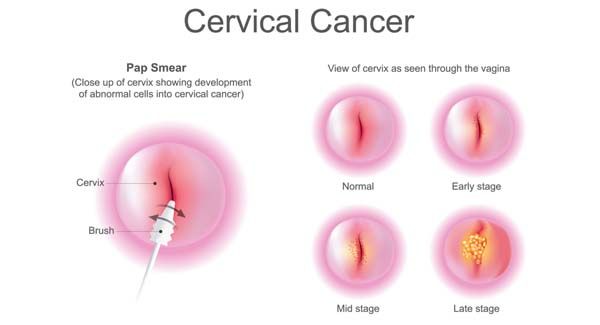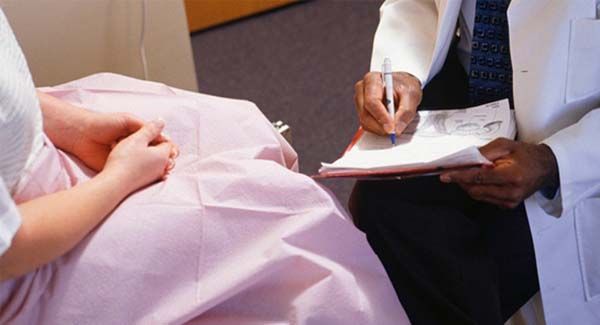For women, the cervix is one of the most important organs of their body. It is found in the lower part of the uterus. Only women have the uterus. This is the organ that houses the baby for growth and development. The uterus can be recognized as a pear-shaped and small organ located between the rectum and the bladder. It can grow bigger during pregnancy and goes back to its normal size when a woman is not pregnant. The vagina connects both the uterus and cervix. Although this organ is highly regarded because this is where the life of a baby springs, but this is also the place where cervical cancer can develop. Cells in the cervix have a tendency to grow rapidly and uncontrollably, affecting other parts of the body. When they reach a certain size, they become tumor. A tumor can be benign and malignant. The tumor that is benign is the tumor that does not affect other parts of the body fatally or does not threaten a woman’s life while a malignant tumor is the opposite…it spreads all throughout the body and can be considered already a deadly cancer which is called cervical cancer.
One of the most common types of cancer, cervical cancer affected almost 528,000 women in the world last 2012. In the UK, almost 3000 new cases occur every day, and in the USA, it is estimated that there will be 13240 new cases of invasive cervical cancer diagnosed and 4170 women are expected to die. There are two kinds of cervical cancer: the squamous cell carcinomas and the adenocarcinomas. Almost 9 out of 10 cases of cervical cancer are squamous cell carcinomas. Squamous cell carcinomas can start developing from the cells in the exocervix and the adenocarcinomas develop in the gland cells. Cervical cancer is much more common in developing nations than in developed ones. Human papilloma virus is regarded as the common cause of cervical cancer. HPV is a group of viruses and is transmitted through sexual intercourse, thus making sexually active women at risk for cervical cancer.
Years ago, this type of cancer has been the number 1 cause of death for women. However, cervical cancer recovery rate varies in each individual because of different factors. These factors can range from nationality, race, lifestyle, to stage of cancer. For an overview of the survival statistics, the 50-year survival rate is a reliable metric. As for all women suffering from cervical cancer, the recovery rate is 68% while 69% for White women and 57% for Black women. Note that these rates are estimation only and come from data annually gathered in the USA.
Cervical cancer can really be polarizing but because of constant research medical professionals have come up with helpful results that can pave the way for a higher percentage of quality of life and effective treatments. That is why the rate of people getting cured of cervical cancer has been showing positive results. This is because of a massive awareness drive around the world. Indeed, prevention will always be better than cure and that is why there are prevention tips women should remember and do to avoid or get cured from cervical cancer. To prevent cervical cancer, one must be extra careful especially when they are sexually active, quit smoking, and get tested.
Pap test, a test that is quick and painless for precancer and cancer of the uterine cervix, is a beneficial test for detecting cervical cancer. Having this test is ensuring regular preventive care to maintaining good health. Named after the notable Greek doctor Georgios Papanikolaou, Pap test has been developed in the early 1920s. Although Romanian Aurel Babes had similar discoveries with Papanikolaou, his method was different. In the end, it was Papanikolaou’s name was used for the naming of the test.
Fact No. 1 Pap Test Can Detect Normal And Abnormal Cells

It is being stressed every time and in every corner of the medical world that early detection of cancer or of any disease is vitally important. For instance, if a case of cervical cancer has been detected early, then the patient will have a bigger chance of survival. Pap test which can also be called as Pap smear is used to test as to whether there is a presence of precancerous or cancerous cells on the cervix—where cervical cancer starts. Note that precancerous lesions and early cervical cancer are curable and treatable because of its early detection. As years of studies show, there has been a significant decrease in the number of cervical cancer cases and deaths per year. The main objective of Pap test is detecting abnormal cells that have the chance of developing into cancer if left untreated. Infections, inflammations, and other non-cancerous conditions can also be found because of this test. On the other hand, HPV testing is another type of cervical cancer test. HPV test specifically looks for the occurrence of high-risk HPV types in the cells in the cervix. Now, women have to follow some procedures in order to undergo a Pap test. Scheduling an appointment with a doctor would be the first thing to do. For menstruating women, they should reschedule their test since the results would be less accurate. Another reminder would be women should as much as possible avoid sexual intercourse, douching, and use spermicidal products so there will be no interventions with the test results. For pregnant women, the first 24 weeks is still safe for Pap test. A woman is advised to be calm and take deep breathing while undergoing the procedure. When the test is done, discomfort because of the scraping and some cramping will be felt. Vaginal bleeding will also likely happen. When there is severe discomfort or there is continued bleeding, it is best to consult the doctor. Undergoing a Pap test can also be considered as part of the treatment for pre-cervical cancer.
Fact No. 2 Pap Test Is Quick and Easy

A Pap test can be performed in a hospital, a clinic, or even in a community health center. Basically, certain sample cells are scraped from the cervix and then these cells will be further examined to know if there are abnormalities in the cells. The procedure is having a woman lie on an examination table as a healthcare professional inserts the “speculum.” A speculum is used so that it will be easy to open the vaginal canal. When the vaginal canal is open, the cervix can be clearly found and viewed. Then, the medical professional will take the cells in a plastic or wooden scraper or sometimes a cervical brush. It usually takes one to two days of examination before results can be made available. In a conventional Pap test, a specimen will be studied in a glass microscope while adding a fixative. In the US, automated liquid-based Pap cytology test has been widely used as compared to the conventional one. For this process, instead of studying the specimen in a microscope, the collected cells are preserved in a vial of liquid. A liquid-based testing such as the Pap cytology test is quite advantageous since it can also be used for detecting the occurrence of high-risk types of HPV. Also, when the sample is being preserved in a liquid preservative, the overall sample quality will be protected and preserved. But although the two use different methods in testing, they still have one the same goal and that is to detect abnormalities. There are only two results for a Pap test: normal or abnormal. When a result is normal, then it means that there are no abnormal cells detected. If it’s abnormal, it doesn’t immediately mean that a woman already has cancer. Abnormal cells come in different levels. And milder abnormal cells are often seen as compared to those severe ones. The USA had adapted the Bethesda System standard set of terms in reporting the results of Pap test.
FACT NO. 3 The Best Time To Take The Pap Test Is NOW

Pap test has been quite a taboo for some especially for developing countries. Women in these countries don’t still have access to healthcare while some even take this as a privilege. Sadly, women still view Pap test as embarrassing because of the process. In March 2012, the American Cancer Society, American Society for Colposcopy and Cervical Pathology, and the American Society for Clinical Pathology issued updated implementing guidelines for Pap testing. As per the new guidelines, it is now highly recommended for women starting at the age of 21 to start getting tested. Before, it is encouraged that women take the test 3 years after their sexual intercourse. Moreover, women in the age range of 21 to 29 must be screened every three years. As for those who are in the age 30 to 65, they should be screened every 5 years. Women who have risk factors on the other hand should be screened as frequent as possible. Risk factors can be age, family history of certain cancers, smoking, radiation exposure, virus or bacteria infection, genetic changes, got infected with human papilloma virus, being exposed to diethylstilbestrol before birth, and if a woman is being treated for a precancerous cervical lesion or cervical cancer. If a woman is in a monogamous relationship, she might still have to undergo testing because the virus is just dormant and might become active. A Pap test is best partnered with HPV test to lengthen the screening interval of 5 years wherein abnormalities will be detected and then treated in an ample time. Also, HPV test will help detect glandular cell abnormalities. These are the cells that produce mucus which can be found in the endocervical canal. It is important to make women realize that the results of Pap test are accurate. These screenings are expected to reduce cervical cancer rates and mortality by 80%.
Even if bombarded with all these astounding benefits of taking the Pap test and learning about the repercussions of not knowing immediately if there are cancerous cells already, most still choose to disregard everything because they feel well yet. This is quite an incorrect thinking. It is vital to let women know that symptoms of HPV are not evident in the first few days, months, or years. Also, some risk factors such as family history cant be relied in predicting the likelihood of developing cervical cancer. With all the developments in the medical field including the emergence of Pap test, there has been a significant decline in the occurrence of cervical cancer. Since the 1950s, almost 60% of the cases have been treated and eventually cured. To note, Pap test does save a woman’s life. It can reduce the risk of getting cervical cancer. And most importantly, if a cervical cancer has been detected earlier, there’s a bigger chance of winning over it unscathed. So women should start consulting their doctor when they are in the age safe already for testing. Aside from Pap test, there are other tests available for women to achieve holistic healthcare. These tests are as follows: breast exam, mammogram, bone mineral density test, colonoscopy. Some states in the US have already good screening rates, while other places and countries lagged behind. Thus, it is important for the government and health departments all around the world to strengthen their awareness drives and campaigns so that women will be able to avail ample medical services. It would be beneficial that women be educated also in the difference of Pap test and HPV test. Although Pap test got high screening rates, HPV screening rates are low because it is still quite new. As for HPV infection, there are already FDA-approved vaccines available in the market. Cevarix and Gardasil are the vaccines that ensure reducing cervical cancer incidence all throughout the world. These vaccines will be really helpful because there will be no need of expensive medical care, biopsies, and invasive procedures. Aside from getting tested, getting vaccinated has been encouraged by health professionals now because it will reduce the chance of developing HPV-related cancer.
On another note, Liger Medical Global is the preeminent cancer organization in the world that brings solutions in both prevention and treatment of cervical cancer. The company offers the best cost-effective and reliable medical devices in taking care of women’s healthcare. All of their products and services are approved and in accordance with the World Health Organization guidelines and recommendations. From this day forward, women should no longer be thrust into the abyss of cervical cancer because the medical world has given us the best that they can give with all their continued research into cancer. This time, women can fight back; they just have to wield the power within their hands. Curing cervical cancer is now a possibility.


